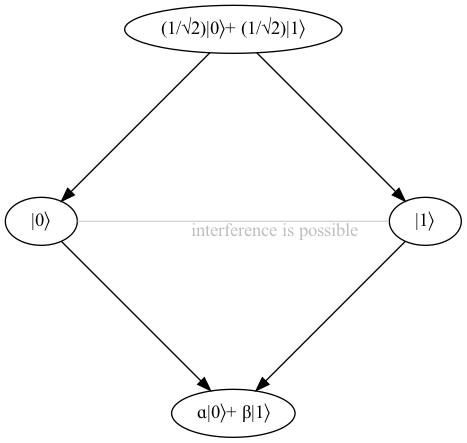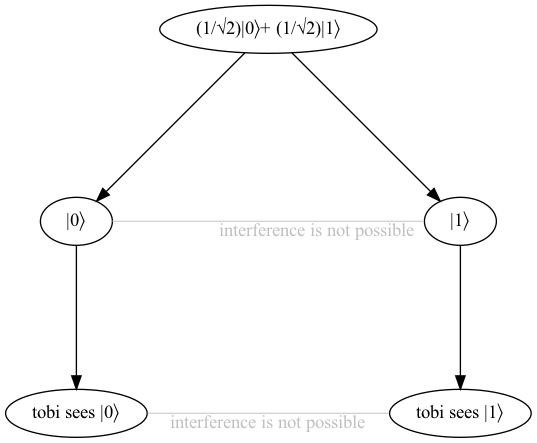Qubits and the Multiverse: how to 𝚐𝚒𝚝-𝚋𝚛𝚊𝚗𝚌𝚑 your life
Have you ever had a decision that was hard to make because both sides of the decision were great in their own way? Where you stress over the decision and wish you could split into two copies of yourself? Some decision theorists recommend flipping a coin, but there is a better way.
Coins are made of lots of atoms, and many of those atoms are entangled with each other and with the environment. The phenomenon of quantum decoherence explains why large collections of atoms tend to behave in classical (non-quantum) ways. Isolated quantum systems, like a single ion cooled down to near-absolute zero, have predictable states and can be used to split a timeline in two.
So instead of flipping a coin, imagine you prepare a qubit using an Ytterbium ion. You prepare the ion into the quantum state \( |\psi \rangle = \frac{1}{\sqrt{2}}|0\rangle + \frac{1}{\sqrt{2}}|1\rangle \). This is a superposition of 0 and 1, with the property that a measurement will be 50% likely to be 0 and 50% likely to be 1. But this is not just a fancy coin flip, in physical reality, that superposition of the Ytterbium ion is really the same ion in two parallel universes that can interfere with each other. That interference is only possible while the ions’ states are coherent. As soon as the outside world measures it and becomes entangled with it, interference is no longer possible, and the outside world also splits into two parallel universes.
If no measurement is made, then we can visualize the flow of time like this:

But if a measurement is made, then the observer, the one trying to make that hard decision, becomes entangled with the system in superposition, and a wave of differentiation spreads out, where one copy of the observer sees the output as \( |0\rangle \) and the other sees it as \( |1\rangle \).

This splitting property is analogous to the git-branch command. Git-branch splits a code base into two copies, with a shared history. The difference is that this multiverse splitting doesn’t produce any new energy or matter. The two timelines were always both there, but they were fungible and capable of interfering. The entanglement event simply made them non-fungible. In this way, multiverse splitting is like minting an NFT, in that it makes something non-fungible, and it doesn’t add anything to the universe that wasn’t already there.
So if you are ever stuck on a decision and wish you could take both, go sign up for AWS Braket, Google’s Cirq or Azure Quantum, and let two versions of yourself take both sides of the decision.
This way of thinking about quantum mechanics comes from the physicist David Deutsch, who explained it in plain english in his book The Beginning of Infinity.